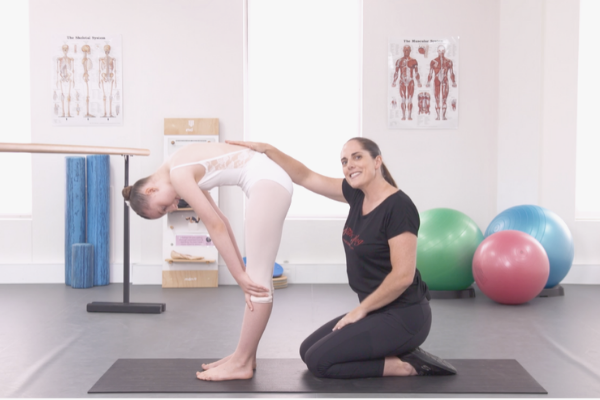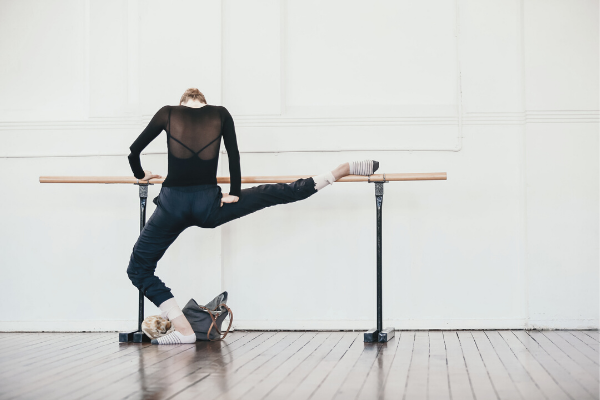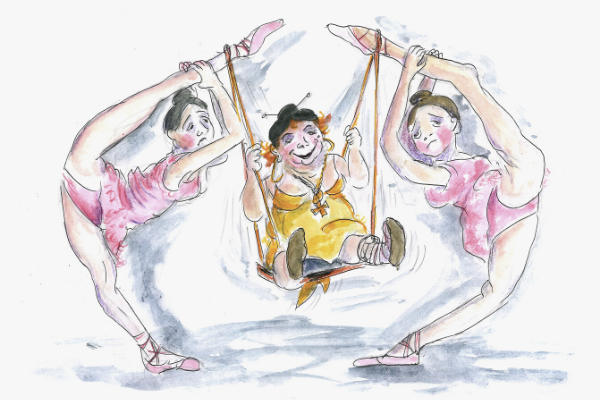- Free Articles
- Shop
- Workshops
- The Dance Educator Series
- Upcoming Workshops
- Workshop FAQ’s
- Host Application Form
- Student Workshop Application Form
- Dance Teacher & Health Professional Directory
- Workshop Testimonials
- Members Areas
- Cart
- My Account
What to do when your Knees don't Straighten
While some people have issues with their knees being to mobile, many other dancers get frustrated because their knees don't straighten! The following Q&A with the parent of a young dancer outlines some ways that you can work on this if you are constantly getting corrections about your knees being bent.
Hi Lisa,
First, I want to thank you for all you do to help dancers be their best! You are a blessing. I just read your email with suggestions for people with hypermobile knees. My daughter actually has the opposite problem. She cannot fully straighten her knees and has very tight hamstrings and hip flexors. She says her legs feel as though they are completely straight, but her teachers are constantly telling her to straighten her knees.
How do I know if this is an issue of tightness or if it is a structural problem?
When she was younger, she didn't have this problem, but as she grew older and taller, it became an issue. Also, she has developed very flat feet, which in turn causes her leg to tend to rotate inward, which makes turnout difficult. But I'm getting off on a tangent. I just wanted to paint the picture for you. Is there anything she can do to remedy this problem of legs that won't fully straighten, so that she, too, can have that beautiful leg line?
Thanks for any advice,
Faye
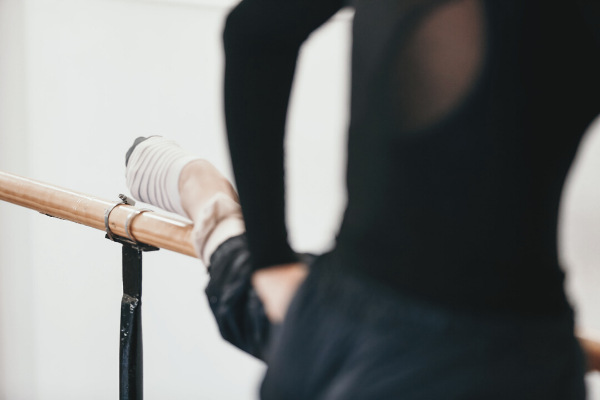
Hi Faye
Thanks so much for your letter. Many young dancers have problems with this and it can be a tricky one to work out on your own. Often tight hamstrings get blamed for the problem but I usually find that this is actually not the true problem. There are a few things that I routinely check on anyone who complains that their knees don’t straighten.
1) The first thing I do is assess how much range they have in their knees, by bending and straightening the knee myself (i.e. with no muscle activity. Some girls have reasonable range but just find it hard to do it themselves). I test this in a position where the hamstrings are relaxed so that any tension in them does not cloud the picture. (i.e. it is much harder to keep the knee straight in a grand battement devant than in standing). Do this with her lying down rather than sitting up.
2) If the student has full range but just finds it hard to straighten the knees in class, I get them to sit with their legs outstretched and "pull up" their knees, at the same time as I feel the muscle on the inside of the knee (VMO). Many young dancers are weak in this muscle, and in some, it will not activate at all. When this happens, over time the knee will become stiffer as it is never going into its full range. Watch the video below of me teaching this exercise to a young student.
3) However, if the student does not have full range in the knee even when it is being moved by someone else, we need to track down exactly what is blocking the range. The first thing to check is where she "feels" the restriction when she tries to straighten her knees. Does she feel a stretching in the back of a knee, or perhaps a blocking in the front? Is the tension on either side of the knee or deep in the knee joint? This gives us some idea of where to start.
4) If the restriction is in the back of the knee, this can often be resolved. There is a little muscle called ‘Popliteus’ in the back of the knee that can block extension range if it is too tight. I don’t teach students to massage out this area as there are lots of delicate nerves and blood vessels in the back of the knee, however, if you consult a qualified physical therapist or massage therapist then they should know how to release some of the tension in this muscle. I have had some extraordinary results with some students by doing this.
5) Tension around the inside of the knee can also be settled with massage to the inner thigh muscles, and from the pictures that you sent, I have a feeling that this may be a contributing part of your daughter’s lack of range. Smooth long strokes to the inner thigh, from the knee up to 2/3 of the way up her inner thigh can improve her flexibility enormously (this also helps with side splits!)
6) If none of these appear to be the cause of the restriction then it may be that her ligaments on the inside of the knee are blocking the range. I do not advocate stretching the ligaments in the knees in any form as this usually leads to many other problems.
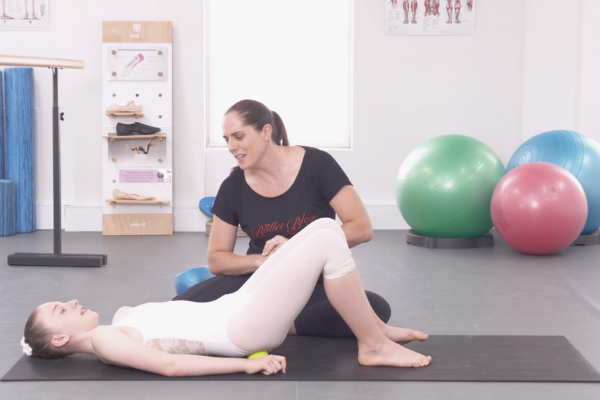
7) Please do not let her put any force through the knees to try to straighten them out as I have seen some very dangerous techniques! Any releases or stretches need to be well thought out and aim to slowly increase her range and strength over time.
I hope this gives you lots of things to try, and do get back to me with how she goes!
Kindest Regards,
Lisa Howell
PS... With regard to her flat feet and turnout... Often it actually goes the other way. The hips start to turn in and the feet follow suit. I would definitely look at doing some work on her deep turnout muscles and foot control to get on top of this quickly. She may also benefit by wearing a soft sports orthotic in her street and school shoes over the next few months.
For more information on neural and fascial mobility please check out our Front Splits Fast program, which is available via an online video course or in a hard copy on Amazon.
Flexibility Resources
If you are looking to delve deeper into this topic, check out the following programs:
- Front Splits Fast Program: This program translates therapeutic techniques for improving Fascial Mobility and Neural Tension into easy to do exercises that can enable instant changes in your flexibility without the risk of damage through over stretching.
- Level Two Online Flexibility Intensive: If you are a dance teacher, this is the perfect continued education course for you. During this course you will understand the multifactorial nature to flexibility training. You will also explore safe ways of assessing exactly where each individual is restricted in order to create the most effective program.
- Level Three Online Flexibility Intensive on 'How to Train Extreme Mobility Safely': This workshop will help you assess your students in detail and be able to offer them effective techniques in a logical clear order to get them on the way to achieving THEIR optimal flexibility. It is also for teachers who are concerned at the extreme positions young dancers are wanting to work into, as it gives you safe guidelines on how to guide their development.





